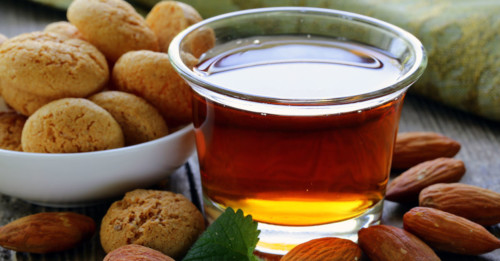Liqueurs are basically liquors that have been flavored and sweetened. The term is interchangeable with “cordial,” except in the U.K., where cordial can also just refer to a sweet, non-alcoholic liquid. But because the wide world of liqueurs contains so very many flavors, it’s useful to know a bit about the basic structure—and purpose—of a liqueur.
To understand what a liqueur is, it helps to know how a liqueur is made. How does the flavor and sweetness get in there? There are four basic methods: infusion, extraction, distillation, or smoking, any of which can be used to get your desired flavor compounds (say, herbs and florals or maybe coffee and chocolate) into a base liquor. Because you’re basically painting flavor onto alcohol, a neutral base liquor is the easiest to work with. And depending on what your desired flavor profile is, you’ll use one of the four flavoring methods (with the option to infuse flavors separately and then blend into one liqueur, or infuse all together).
It’ll help absolutely no one to go liqueur by liqueur to see how flavors are imparted, mostly since there are as many liqueurs as there are possible flavors out there (seriously, we’re talking artichoke, almond, rhubarb, coffee, cinnamon, the list goes on). Also, some recipes—like the famous blend of herbs and aromatics of Chartreuse—are super secret, protected by a veritable vow of monkish silence.
Better to have a list of some of the most popular liqueurs and see what you like. Bear in mind, bitter amaros are absolutely liqueurs, but because they’re specifically bitter, and the flavor profile is such a distinctive thing, we’re treating them in a separate entry.
As for ABV, many liqueurs are lower proof, but liqueurs can range from 15 to 55% ABV, so read the label!
Coffee, Chocolate, Nuts
- Kahlua – coffee
- Patron XO Café – tequila-based, coffee flavored
- Amaretto – almond-flavored
- Frangelico – hazelnut
- Crème de Cacao – chocolate
- Baileys Irish Cream – not coffee, but a whiskey-based cream liqueur often taken with coffee
Spice/Herbs/Florals
- Goldschlager – cinnamon (yes, with flecks of gold)
- Fireball – not a whiskey at all, a whiskey-based cinnamon liqueur
- Galliano – a mix of herbs, fruit, florals, but vanilla dominates
- Chartreuse – a brandy-based liqueur with 130 herbs, florals, and aromatics
- Benedictine – herbal liqueur
- St. Germain – elderflower liqueur
- Crème de Violette – violet flower liqueur
- Drambuie – Scotch-based liqueur flavored with heather, honey, herbs
- Anisette – ansie-flavored liqueur
Licorice
- Sambuca – Italian
- Jägermeister – German
Citrus
- Triple Sec – like Curacao, but drier in flavor (as in less sweet)
- Curaçao – a liqueur flavored with bitter orange peels, can be colored blue
- Cointreau – one of the most famous brands of triple sec
- Grand Marnier – also a seminal brand, a bit sweeter than Cointreau, more like Curaçao
- Limoncello – an Italian lemon liqueur
Fruit
- Chambord – red and black raspberries
- Sloe Gin –a gin-based liquor flavored with Sloe berries
- Midori – honeydew melon
- Cherry Heering – cherry liqueur
- Crème de Cassis – a blackcurrant liqueur
- Luxardo Maraschino – Italian cherry liqueur
